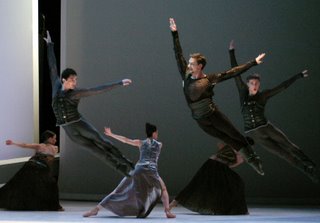Ballet Ouest de Montréal
BO Montréal Brings the Holiday Spirit to Life with The Nutcracker
November 29 - December 21, 2024
BO (Ballet Ouest de Montréal), one of Montreal’s most esteemed ballet companies, announces its enchanting annual performances of The Nutcracker. A beloved holiday tradition, this year’s production captivate audiences from November 29th to December 21st with performances in Montreal, Victoriaville, Saint-Jean-sur-Richelieu and L’Assomption. With a rich history dating back to its founding in 1984, BO Montréal promises an unforgettable experience filled with wonder and artistic excellence.
Led by a cast of 35 talented professional dancers from the company and more than 80 children from each region visited, this production will bring Tchaikovsky’s timeless score to life. Audiences will be transported into a magical world where dreams come alive, snowflakes twirl, and the valiant Nutcracker embarks on his heroic journey. From the iconic Waltz of the Flowers to the mesmerizing Dance of the Sugar Plum Fairy, every moment will celebrate the beauty and elegance of classical ballet.
Special Family Performance
For families looking to introduce their young children to the world of performing arts, BO Montréal will offer a special performance on Sunday, December 8 at 10:00 AM in Montreal. This morning performance is designed to provide a child-friendly experience, featuring a slightly shortened performance, adjusted lighting, and a meet-and-greet with the dancers after the show. Families are encouraged to participate in this experience that promises to create lasting memories.
Claude Caron, Artistic Director of BO Montréa, stated:
“The Nutcracker is a cherished tradition for us at BO Montréal, and every year we are thrilled to introduce new dancers and innovative elements to make it even more magical for our audiences....This production not only showcases the extraordinary talent within our company, but also highlights the dedication and passion of young dancers in our community.”
This year’s performances will feature stunning costumes and elaborate sets designed to immerse attendees in the magical realms of Clara’s dream. From the dazzling Land of Snow to the opulent Kingdom of Sweets, BO Montréal’s production of The Nutcracker is a visual and auditory feast that will leave audiences spellbound.
About BO Montréal
BO Montréal (Ballet Ouest de Montréal) is a nonprofit organization founded in 1984 that is dedicated to the creation and interpretation of innovative works based on a classical dance language. Over its 40 years of existence, the company has presented original ballets and repertoire works, and has welcomed countless dancers, choreographers, creators, and collaborators to its stage.
Nutcracker Performances
Montreal - Centre Pierre-Péladeau
Public Performances
Saturday December 7, 2pm and 7:30pm
Sunday December 8, 10am and 2pm
Performances for Schools
Thursday December 5, 10am and 12:30 pm
Friday December 6, 9:30am and 12pm
Victoriaville – Le Carré 150
Public Performances
Friday November 29, 7pm
Saturday November 30, 1:30 pm
Performances for Schools
Friday November 29, 9:30am
Saint-Jean sur richelieu – Théâtre des Deux Rives
Public Performances
Saturday December 14, 2pm and 7pm
Performances for Schools
Thursday December 12, 9:30am
Friday December 13, 10am
L’Assomption – Théâtre Hector-Charland
Public Performances
Friday December 20, 7:30pm
Saturday December 21, 2pm and 7:30pm
Performances for Schools
Thursday December 19, 10:15am and 1:30pm
Photos Credit: Ballet Ouest de Montréal
For more information visit Ballet Ouest de Montréal website.














